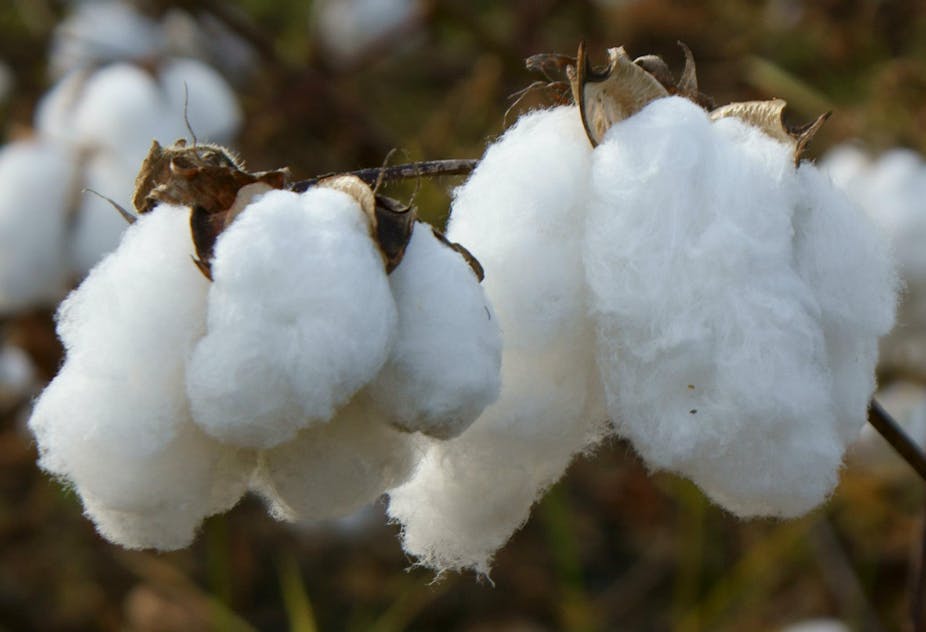Arguments surrounding the use of genetically modified crops and whether they are the solution to the world’s problems of food supply and public health are no nearer to resolution than when GM was introduced.
In Europe, there is widespread opposition to GM crops, with import or cultivation of many GM foods prohibited by EU regulations. In the Americas, and to a lesser extent in Asia, regulations are less stringent and a substantial proportion of the area used to grow corn, soybean and cotton is planted with GM seeds.
The agri-business companies responsible for developing the seeds, notably Monsanto, are frequent targets of anti-GM campaigners. But not all GM crops come from the private sector, with considerable research underway at public research institutions or funded by charities – not that this provides protection from protesters, such as when Golden Rice field trials were destroyed in the Philippines last year.
GM seeds are not just used for foodstuffs. Most of the cotton grown in India comes from GM seeds, referred to as Bt cotton having had the addition of genes from the Bacillus thuringiensis bacterium, which provides resistance to cotton bollworm. Even so, India has banned the use of GM food crops, notably aubergine, partly from the belief that the rate of suicide among farmers has increased in cotton-growing states since Bt cotton was introduced in 2002.
This belief was espoused by Prince Charles in 2008 and more recently by the controversial environmental campaigner Vandana Shiva. Anti-GM campaigns point to the costs of seeds and the fact that a crop failure can ruin farmers who then turn to suicide.
A look at the numbers
The suggestion that there is a suicide among Indian farmers every half an hour seems shocking. This is not a very helpful statistic however; there are more than 40m Indian farmers in the nine main cotton-growing states.

Fortunately, suicide is rare, and no less rare among Indian farmers than among farmers in other parts of the world. In 2011, the annual suicide rate for Indian farmers in the main cotton-growing states was around 30 per 100,000 farmers. This is higher than in England and Wales where the rate is about 12 per 100,000, but similar to the best estimates of the rates in Scotland and France.
The evidence indicates that GM farming does not lead to higher suicide rates. In six out of the nine cotton-growing states, the suicide rate for males who did not work on farms was higher than for farmers. Also in 2001 (before Bt cotton was introduced) the suicide rate was 31.7 per 100,000 and in 2011 the corresponding estimate was 29.3 – only a minor difference.
The balance of evidence favours the argument that adopting Bt cotton has increased yields in all cotton-growing states except Punjab, and has reduced pesticide costs so that the crop has become more profitable for farmers. So it’s reasonable to suppose that these farmers have reduced their debts and, to the extent that suicide has an economic component, are less at risk of committing suicide.

In fact, the available data does not support the view that farmer suicides have increased following the introduction of Bt cotton. Taking all states together, there is evidence to support the hypothesis that the reverse is true: male farmer suicide rates have actually declined after 2005 having been increasing before then.
The picture at the state level is less clear-cut, especially the contrast between Maharashtra and Punjab. In Maharashtra, farmer suicides have gone down, in Punjab they have gone up. Can we bring any more evidence to bear to understand this contrast better?
Unsupported trends
Both Punjab and Maharashtra have relatively high proportions of farmers growing cotton (26% and 20%) and Bt adoption rates are much the same. However, when we examine the effect of the introduction of Bt cotton on cotton yields, we find that yields have risen in Maharashtra but have gone down in Punjab. We cannot, of course, say that this is a causal effect but the results for these two states are in line with the hypothesis that there is an economic component to the explanation of suicides.
The Indian farmer suicide story has become received wisdom for some anti-GM campaigners. In fact, we find that the suicide rate for male Indian farmers is slightly lower than the non-farmer rate. And Indian suicide rates as a whole are not notably high in a global context. The pattern of changes in suicide rates over the last 15 years is consistent with a beneficial effect of Bt cotton, albeit not in every cotton-growing state.
The widespread adoption of Bt cotton – more than 90% by area in most states – means we will never have the opportunity to carry out a before and after epidemiological study of cotton farmers. Instead we have to rely on official data at an aggregate level with all the caveats that entails. However, such a study might be possible if permission to grow GM vegetable crops is granted by the Indian government (as it has been in Bangladesh) and might lead to a more definitive answer.
Hard Evidence is a series of articles in which academics use research evidence to tackle the trickiest public policy questions.

